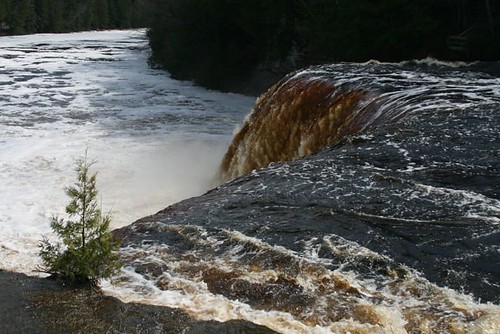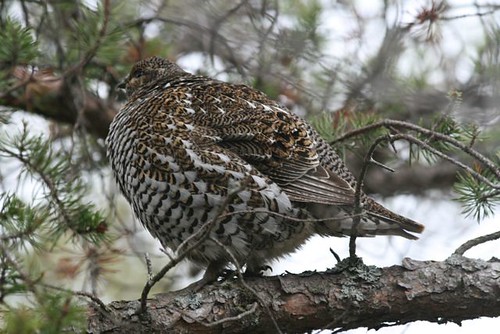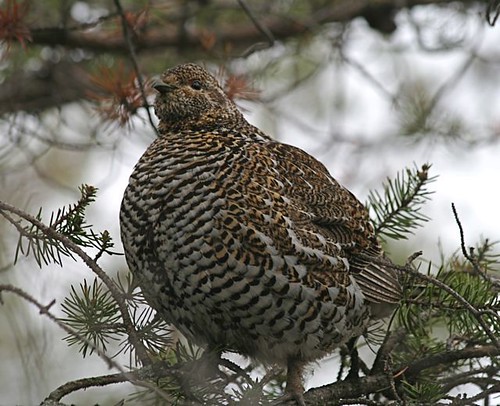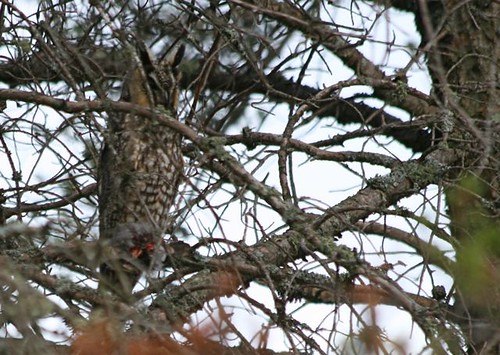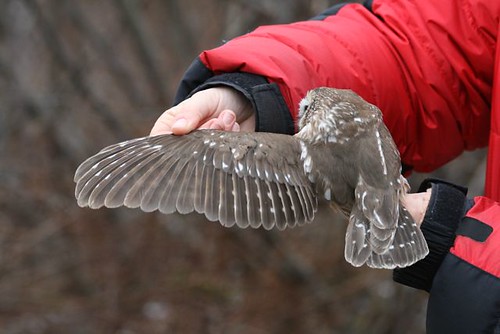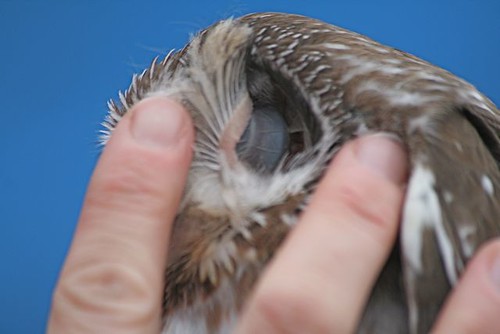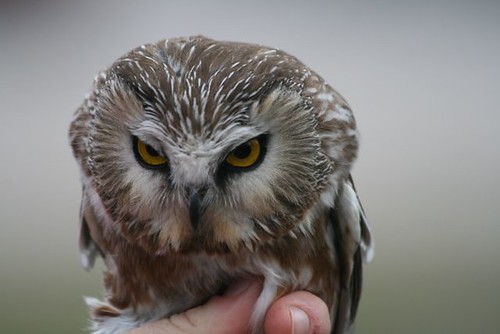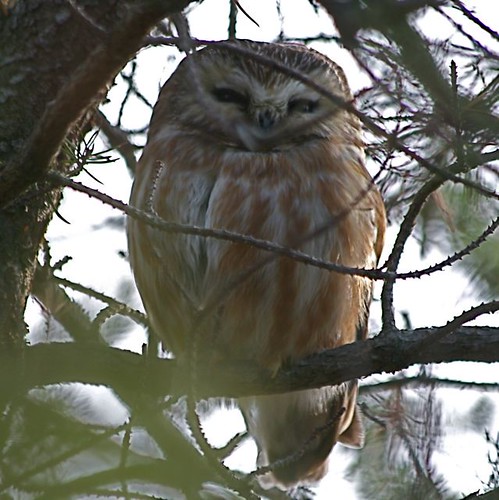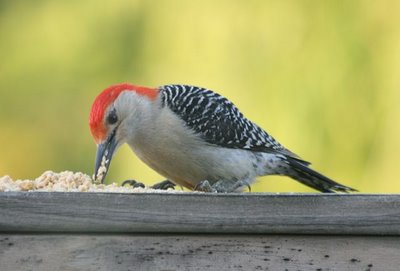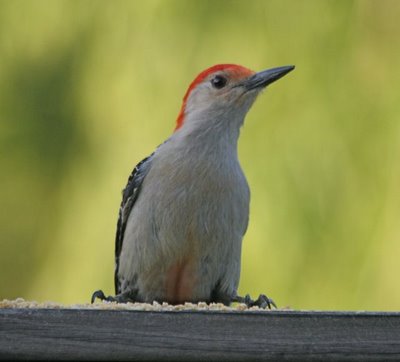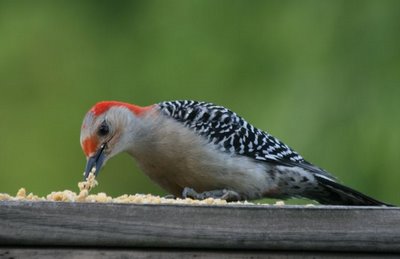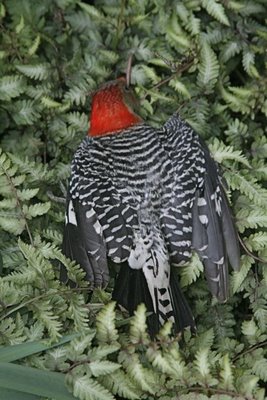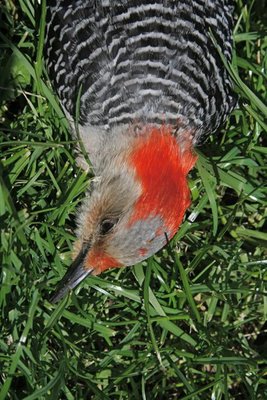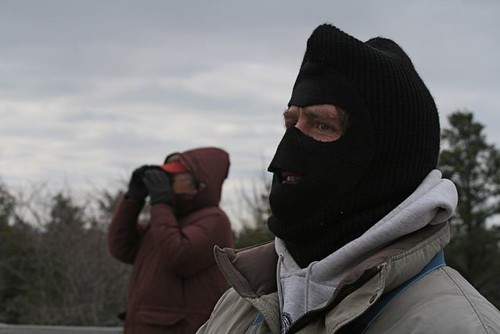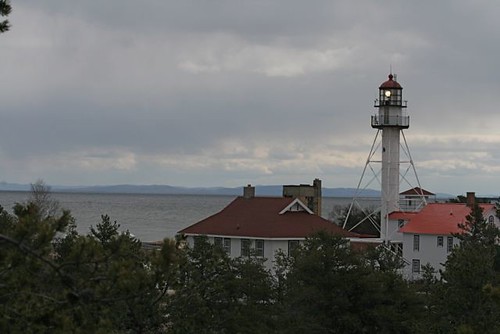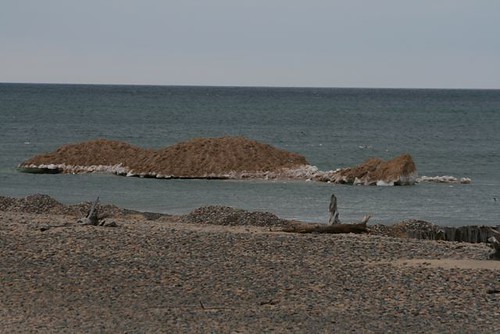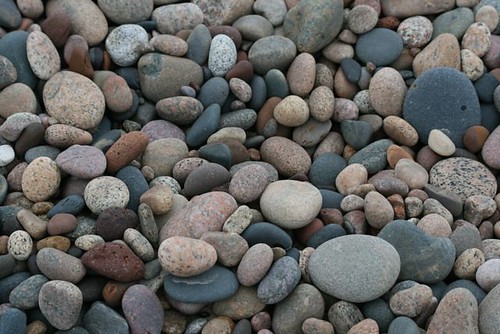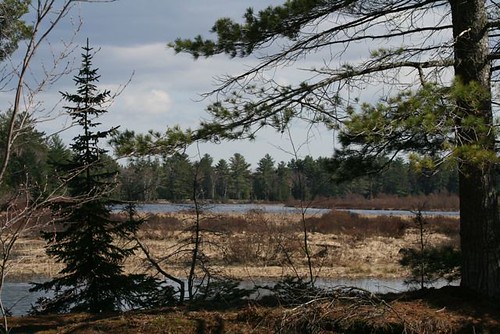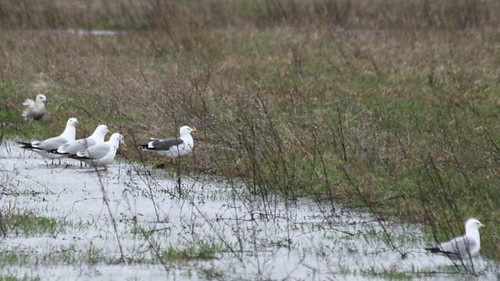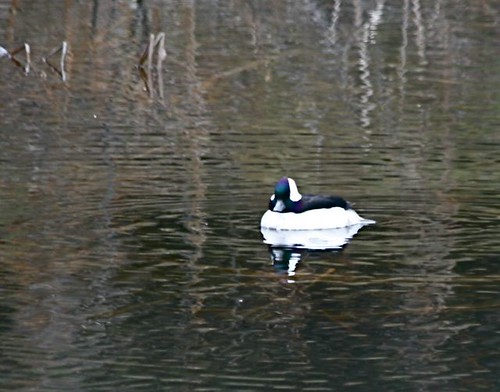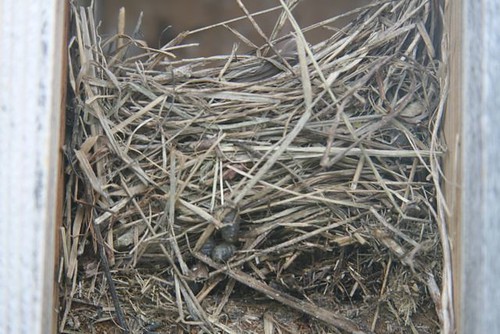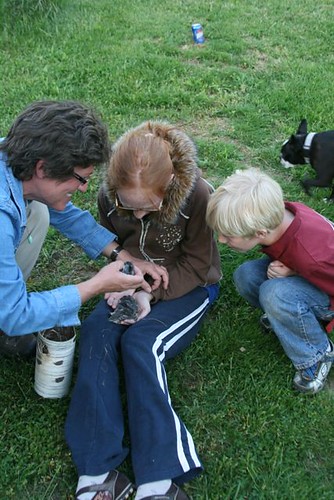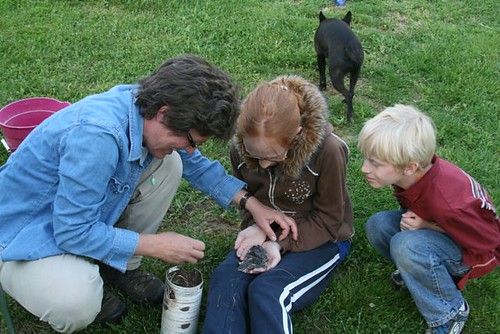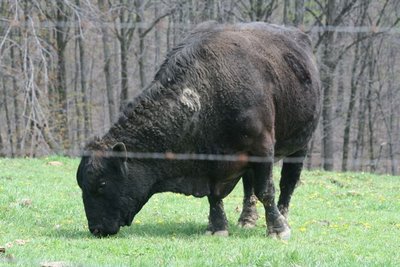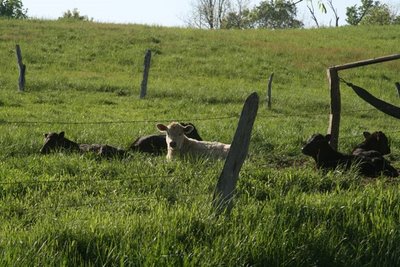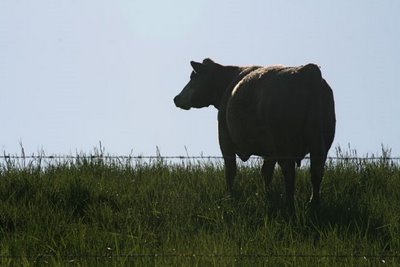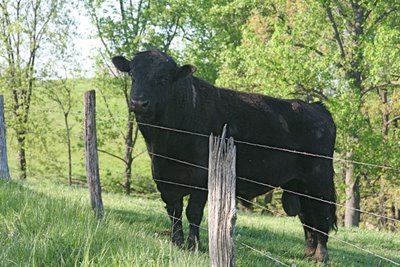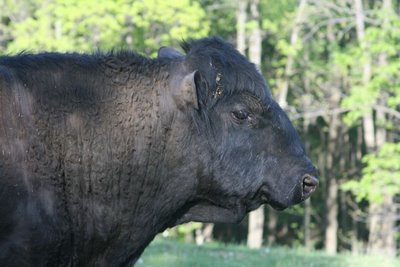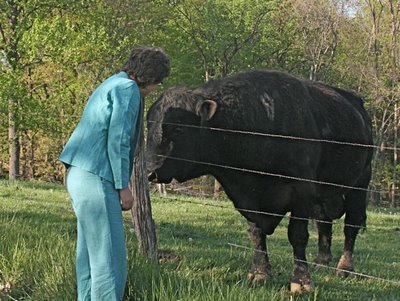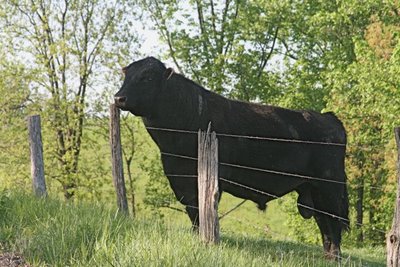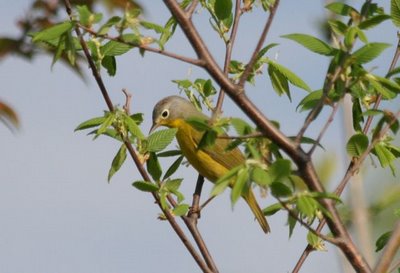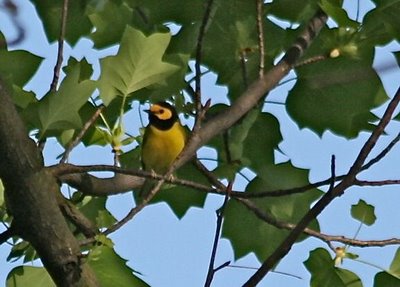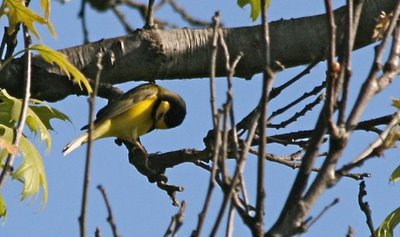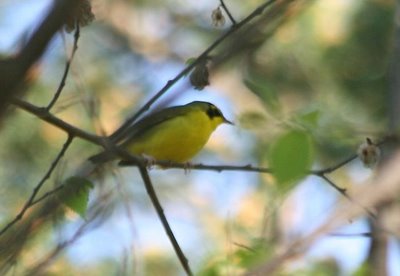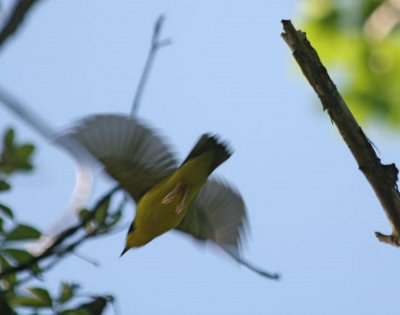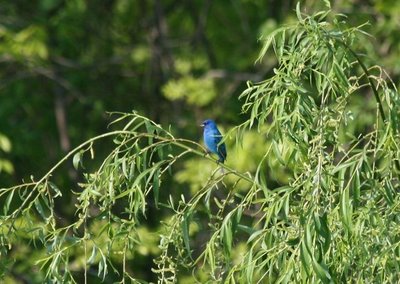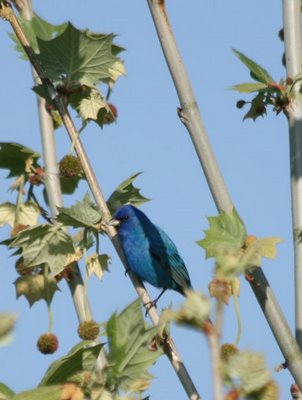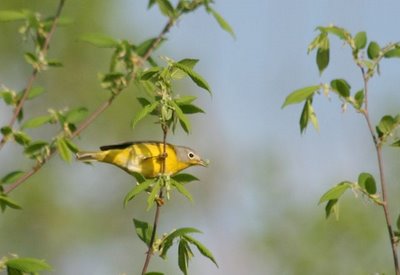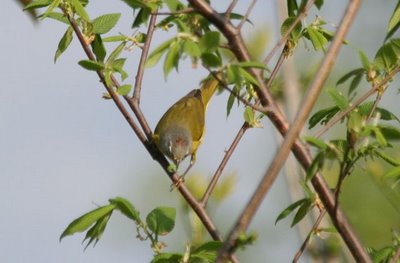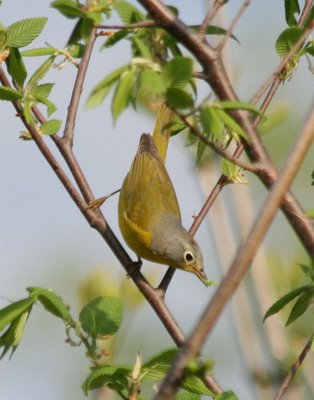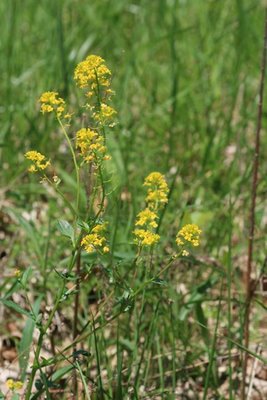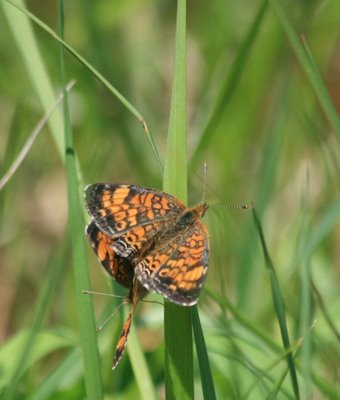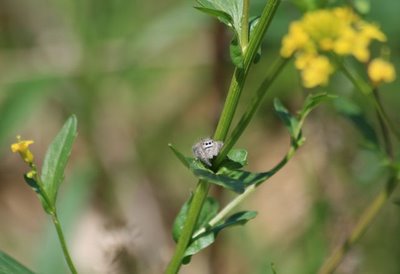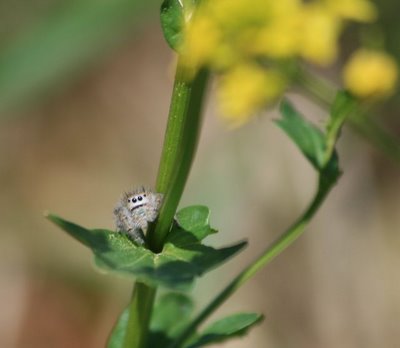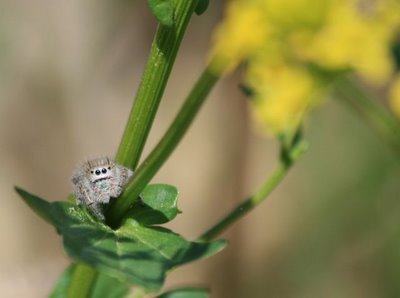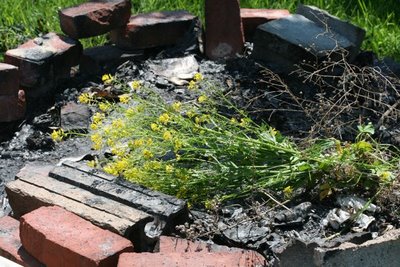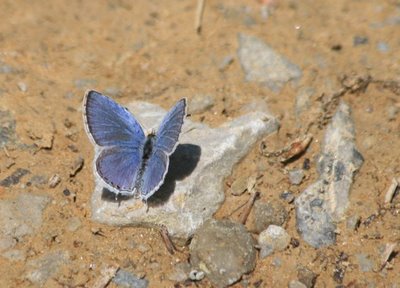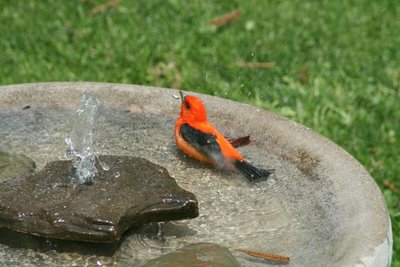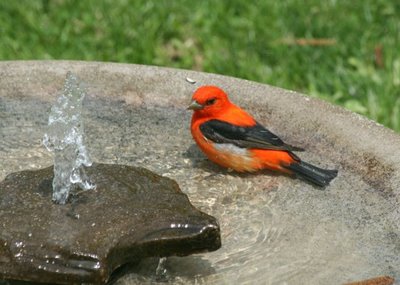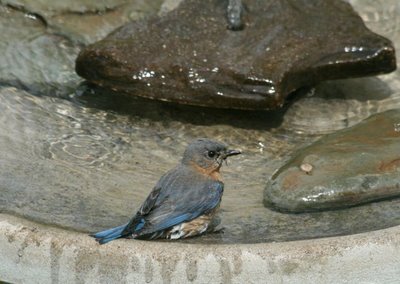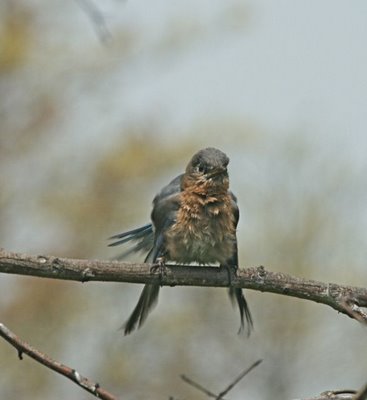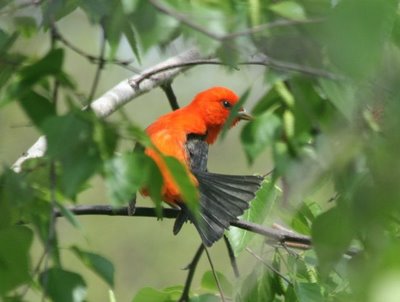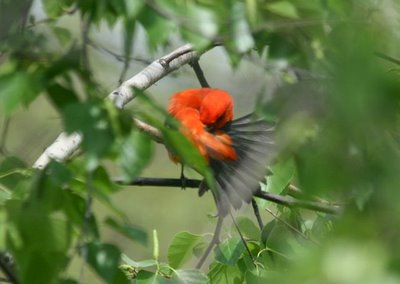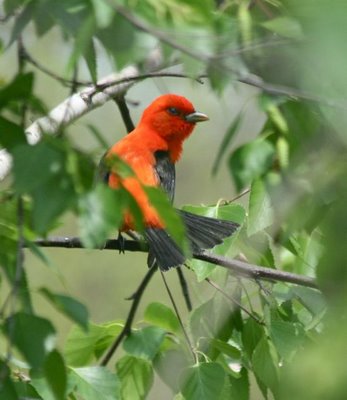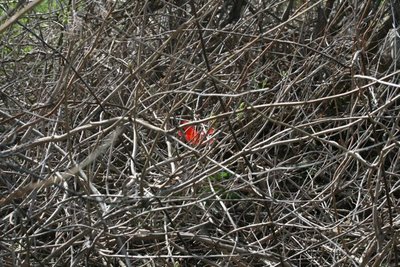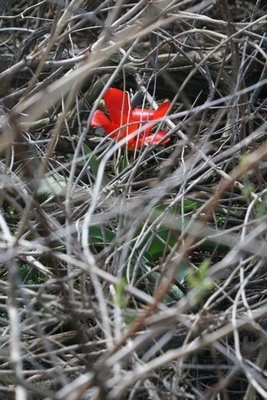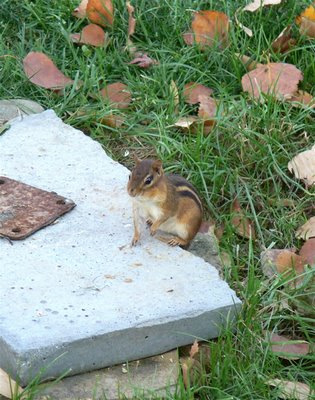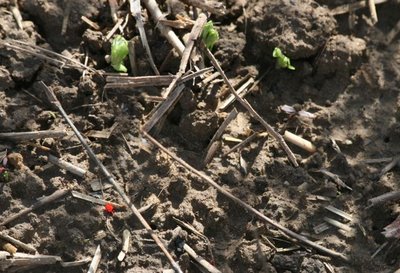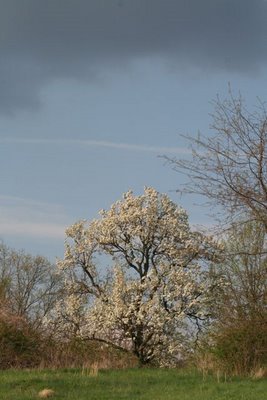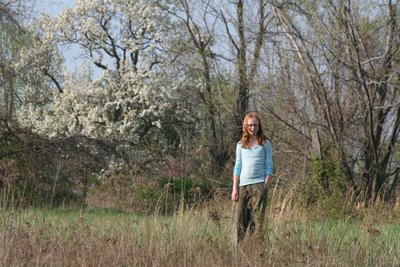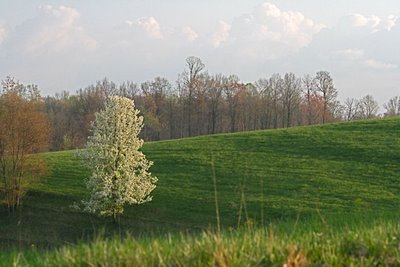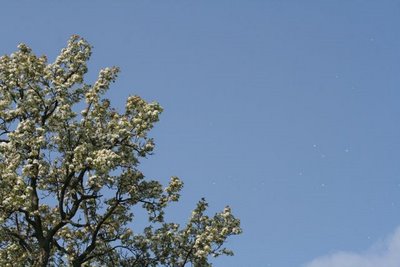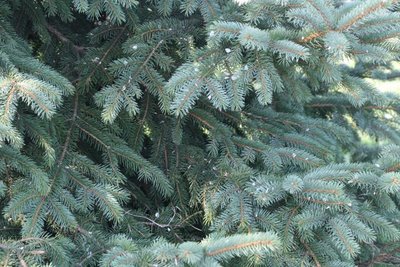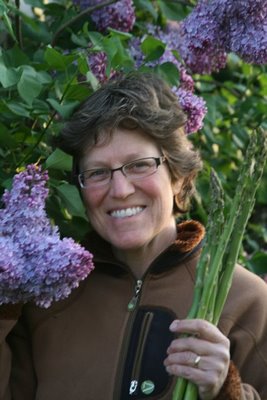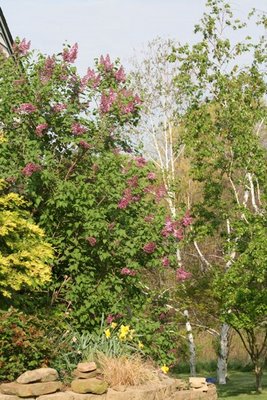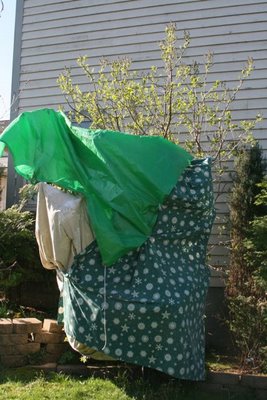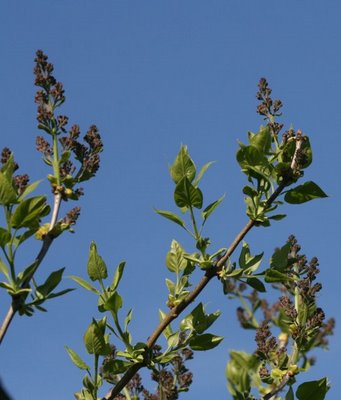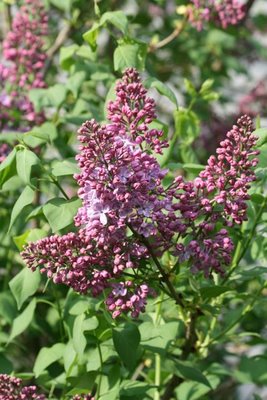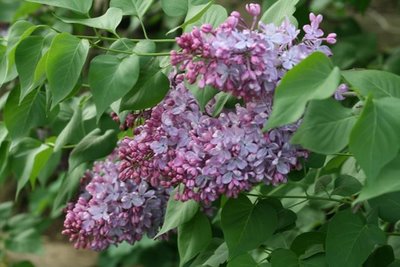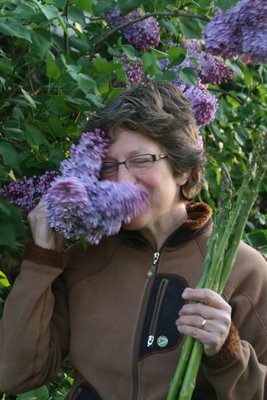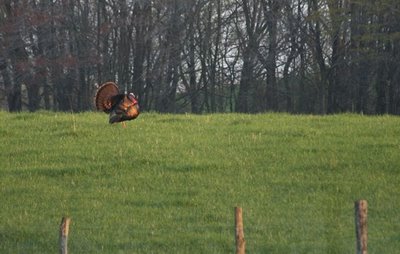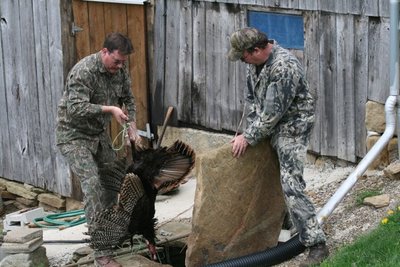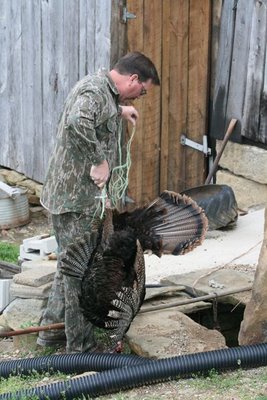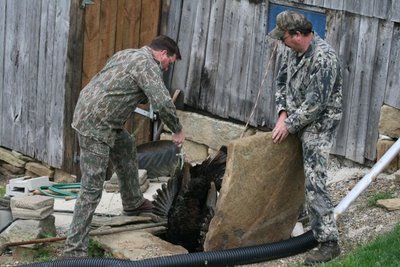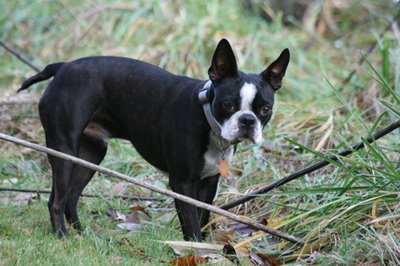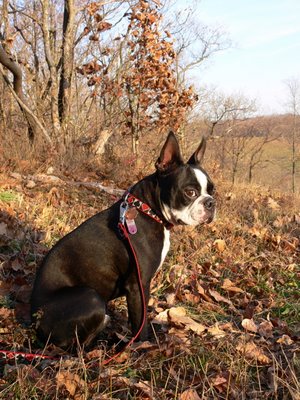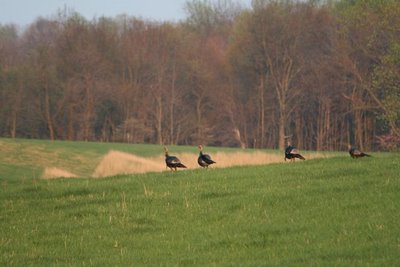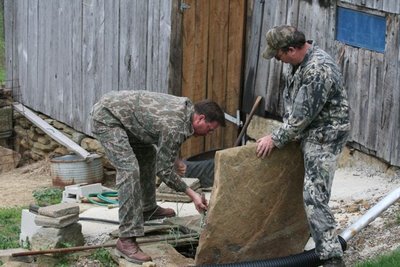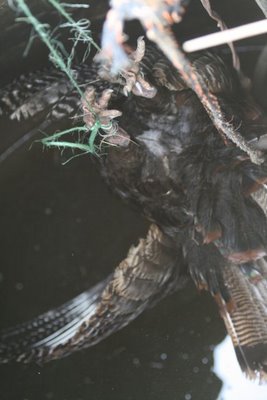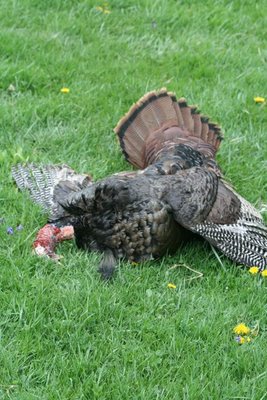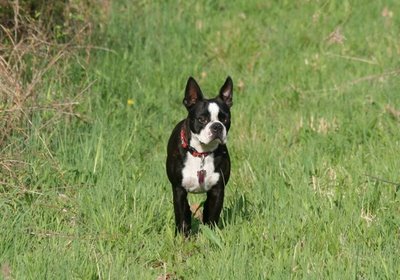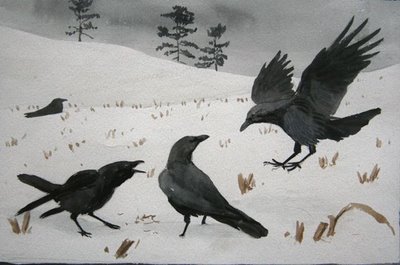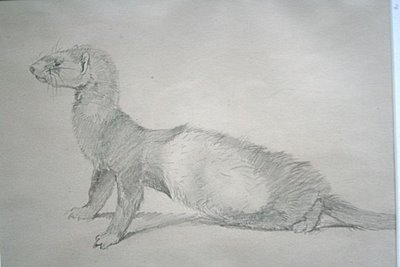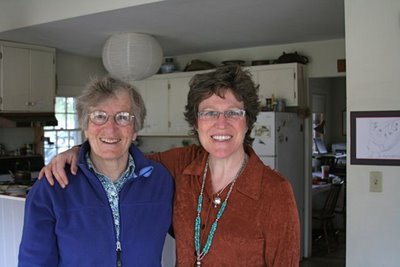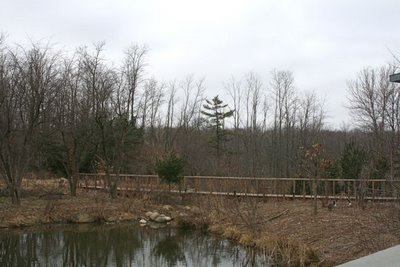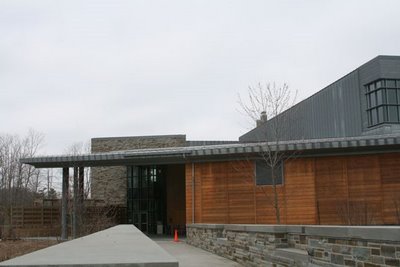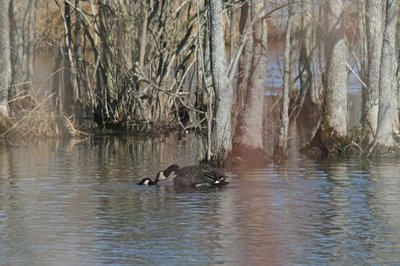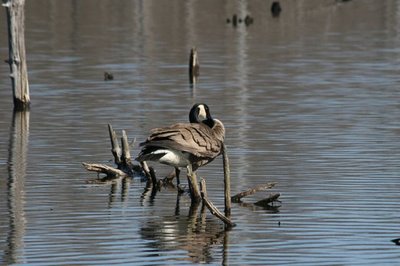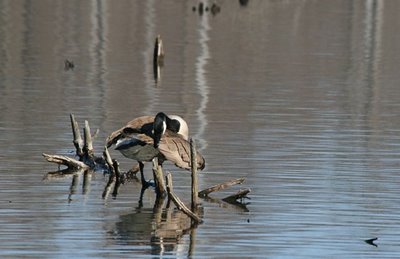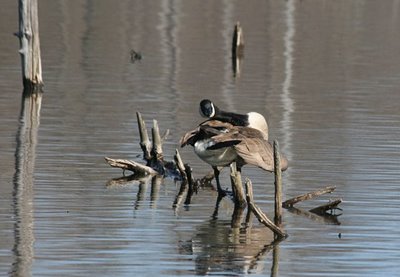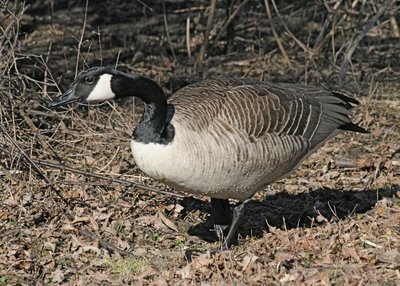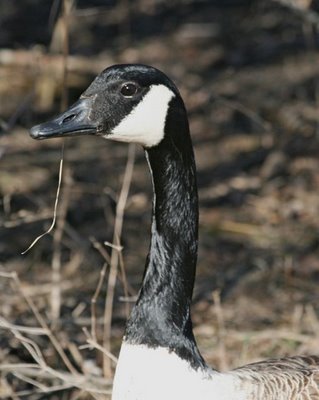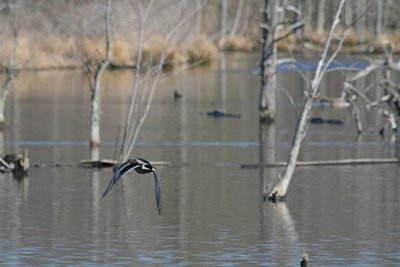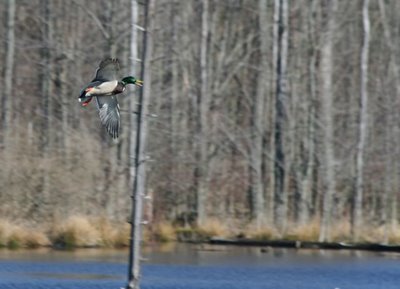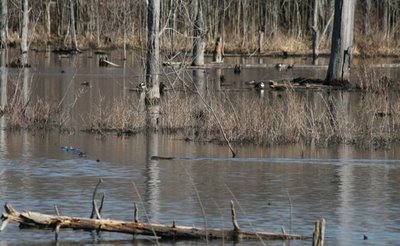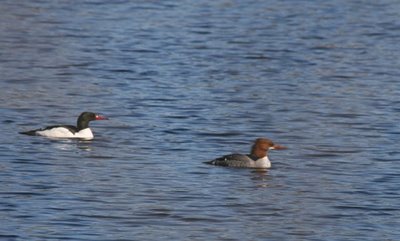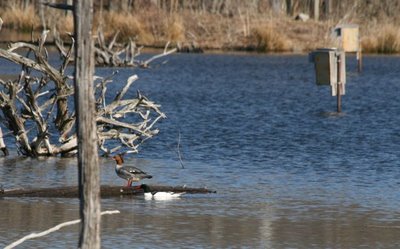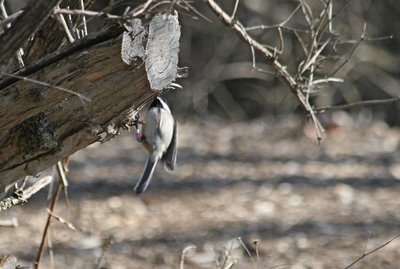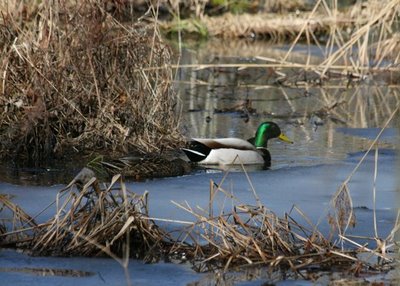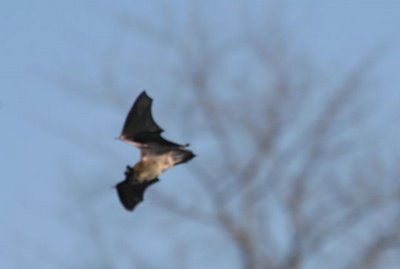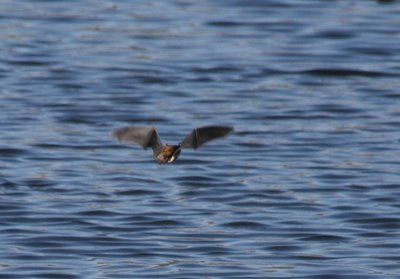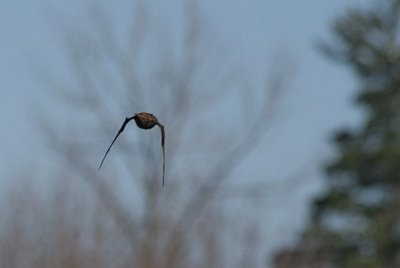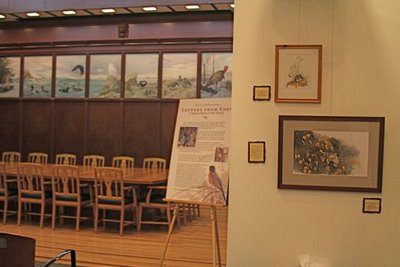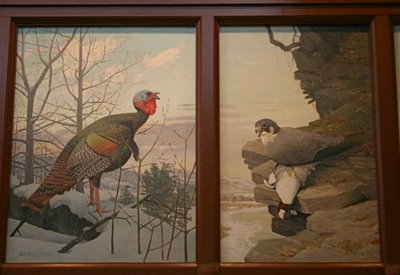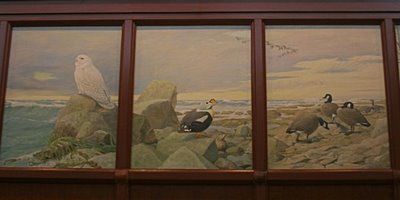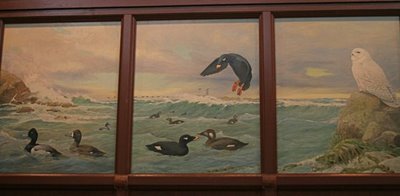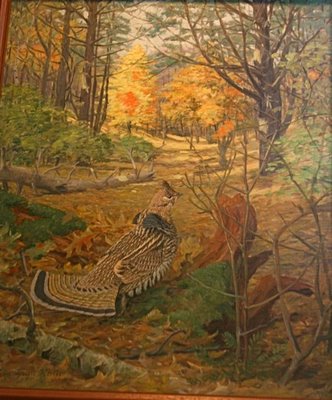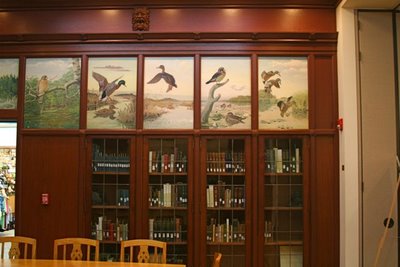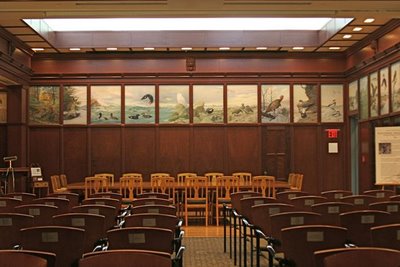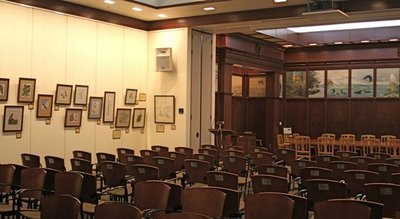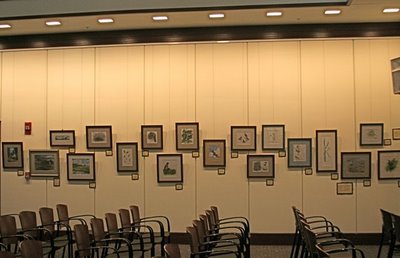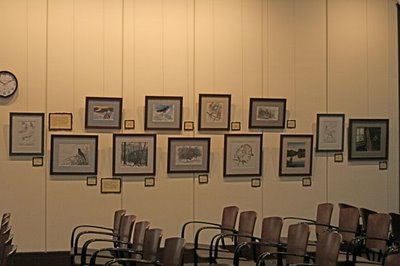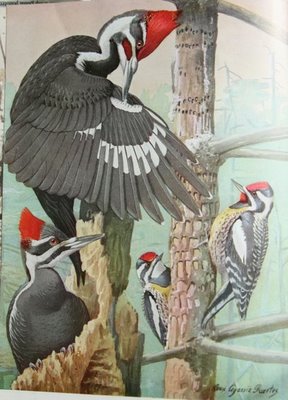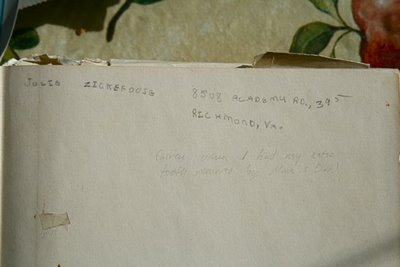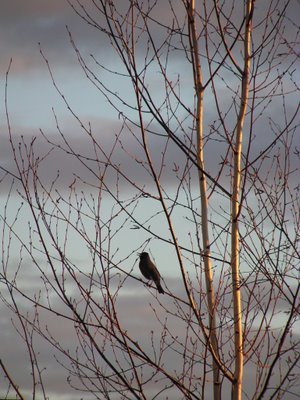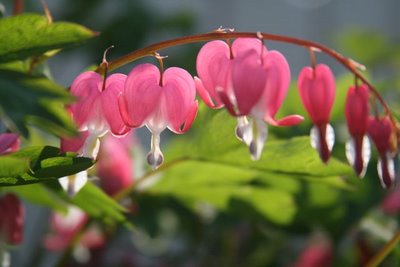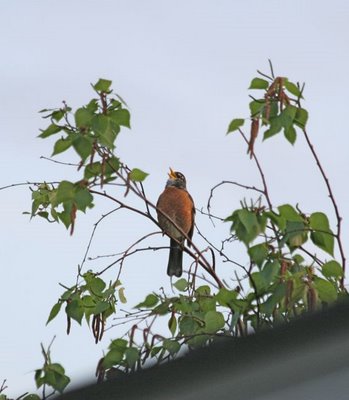I Didn't Get a Picture
This post is for all the ivory-billed woodpecker seekers out there, whether they slog through bayous or dream from their chairs.
As you know, I carry my camera wherever I go, and I've gotten pretty fast on the draw, shooting marginally acceptable to OK to pretty good pictures of the jittery likes of warblers and wild turkeys as well as mushrooms, butterflies, blowfly larvae, and rainbows.
But there are some times when you can't get a picture. Naturally, they are the times when you'd most like to have one. Hence the dedication of this post.
On my last day in the Upper Peninsula of Michigan, I was driving south on Route 123, just north of its intersection with Route 28, on my way from Paradise to Sault Ste. Marie. Several animals crossed the road, bounding and running, perhaps a quarter-mile up ahead. I didn't see much remarkable about the first two; I'm assuming, since they didn't catch my eye, that they were deer, but I couldn't swear to that, since my attention was focused like a laser on the third animal. The first two animals were darting and zigging erratically as they ran. The third was loping, a kind of rocking-horse gait, taking a more direct path, different from the other animals'. It was very long-legged, with a longish neck held erect, and pricked ears. A bushy tail, held low at a 45-degree angle, flowed behind it. It was solid, coal black. I believe it was chasing the first two animals. Whaaa?

Not my photo, though I wish it were. This is a National Park Service photo. But it's exactly what I saw. Aggggghhhh!
It was more than twice the size of any coyote I've ever seen, and entirely too dark. Good of it, to be a black morph animal; no confusing that with a little blonde songdog. Gasping, I realized that I had just seen my first timber wolf.
I slammed on the brakes as I whizzed by where it leapt up a small bank and disappeared in the yard of a deserted log cabin, backed by extensive woodland. I backed up, fishtailing wildly, and pulled into the driveway, looking all around me at the woodland edge, hoping hoping hoping to catch another glimpse of my life wolf. The woods were silent, giving nothing away. I am sure it wheeled around, panting, in dense cover and was watching me. I scanned with my binoculars, looking hardest where it's hardest to see. Nothing. That is how the wolf would have it.
Shaking, exhilarated, I drove on another half-mile when I saw a middle-aged couple with trash bags, picking up litter along the roadside. They looked kind and were dressed for the weather. I figured they lived there, to care that much, and I was right. I pulled over and rolled down the window.
"Excuse me. May I ask you a question?"
"Sure."
"Could I have just seen a wolf?"
"OHH, yeah!" the man replied, smiling broadly. "They're here, even though the DNR will tell you they aren't. They don't want to admit it. But they've been killing our neighbors' dogs two roads over, and when they showed the DNR biologist the tracks he denied it. They (the biologists) don't want them here if they don't have radio collars on."
"So, do you hear them howling?"
"Oh, yes, and coyotes too. You can tell the difference!"
I described my sighting and they smiled and nodded. Yep. That was a wolf. It was really nice to have confirmation from people who live right where I saw the animal, people who know enough and care enough about nature to pick up others' refuse along the road.
A friend with extensive UP experience advises that there is an estimated population of 500 wolves there at present. He's seen them in Canada, but never on the UP, and he was just about as excited as I was to hear of it. That I was given to see one of the few, and a coal-black one at that, seemed like an extravagant gift, a surprise party for my soul.
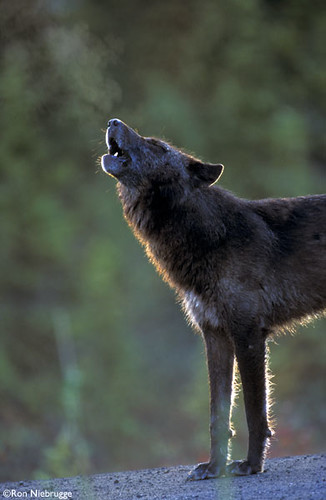
Photo of a black Denali wolf by Ron Niebrugge, at wildnatureimages.com. Used by permission of the photographer. Thank you, Ron and Janine!
Thank you, Bob Pettit, college biology professor, WPBO board member and hardworking 20th Anniversary Spring Fling organizer, for inviting me to Michigan, for taking good care of me wherever I went, including feeding me pasties, and for arranging to have a wolf chase a couple of deer across my path as I left. I know you had something to do with it. You arranged everything else. Long live Bob, the Whitefish Point Bird Observatory, the Spring Fling, the little cedar in the waterfall, the ivory-billed woodpecker, and the coal-black wolf on Route 123.
Labels: ivory-billed woodpecker, my life wolf, wolves on the Upper Peninsula







